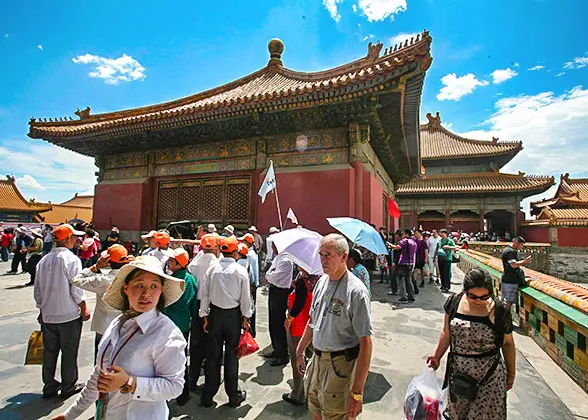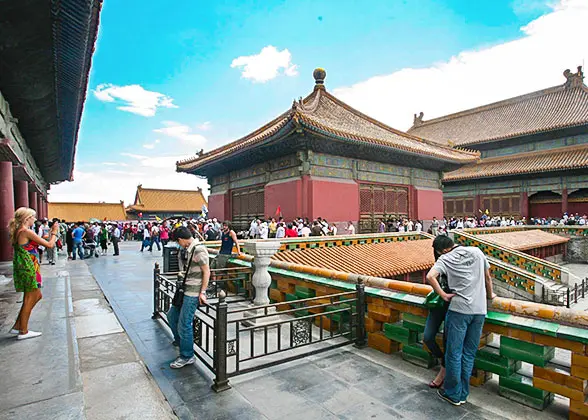Hall of Celestial and Terrestrial Union (Jiaotaidian)
The Hall of Celestial and Terrestrial Union (Jiaotaidian), used for empress's birthday celebration and royal seals storage, is the smallest of the three main palaces in the Forbidden City's Inner Court, situated between the Palace of Heavenly Purity (Qianqinggong) and the Palace of Earthly Tranquility (Kunninggong).
This single-roof structure with a gilded bronze spherical pinnacle is square in shape, similar to but smaller than the Hall of Central Harmony (Zhonghedian), one of the three main halls in the Outer Court.
It was established in the reign of Jiajing (1507-1567) of the Ming Dynasty (1368-1644), and was restored twice in 1655 and in 1669. In 1797, it was damaged by a fire and thus rebuilt the next year.
The Forbidden City was completed in 1420 without the Hall of Celestial and Terrestrial Union. Why was this hall built later? It's said that this had something to do with the Emperor Jiajing's belief in Taoism, a religion that teaches methods to achieve immortality.
According to the I Ching (Book of Changes) and Bagua (Eight Trigrams) in Taoism, Emperor Jiajing found the Forbidden City's layout, with the Palace of Heavenly Purity (Qianqinggong) in front of the Palace of Earthly Tranquility (Kunninggong), symbolizing inauspiciousness, as heaven (Qian) above earth (Kun) is considered inauspicious.
So, he decided to build a hall between them to harmonize the unbalance, and then the Hall of Celestial and Terrestrial Union was built.
 Empress Zhou's Wisdom in the Hall of Celestial and Terrestrial Union
Empress Zhou's Wisdom in the Hall of Celestial and Terrestrial Union
Emperor Chongzhen (1611~1644) had named Zhou (1611~1644) his Empress, with Tian and Yuan as concubines. While Yuan and Zhou got along, Tian, favored by the emperor, grew arrogant. Zhou, who was in charge of keeping the Inner Court in order, waited patiently for an opportunity to discipline Tian.
 Breaking the Rules: The Fate of An Dehai
Breaking the Rules: The Fate of An Dehai
 Why did Emperor Qianlong select 25 imperial seals for the Forbidden City?
Why did Emperor Qianlong select 25 imperial seals for the Forbidden City?
This single-roof structure with a gilded bronze spherical pinnacle is square in shape, similar to but smaller than the Hall of Central Harmony (Zhonghedian), one of the three main halls in the Outer Court.
When & Why was the Hall of Celestial and Terrestrial Union built?
It was established in the reign of Jiajing (1507-1567) of the Ming Dynasty (1368-1644), and was restored twice in 1655 and in 1669. In 1797, it was damaged by a fire and thus rebuilt the next year.
|
|
The Forbidden City was completed in 1420 without the Hall of Celestial and Terrestrial Union. Why was this hall built later? It's said that this had something to do with the Emperor Jiajing's belief in Taoism, a religion that teaches methods to achieve immortality.
According to the I Ching (Book of Changes) and Bagua (Eight Trigrams) in Taoism, Emperor Jiajing found the Forbidden City's layout, with the Palace of Heavenly Purity (Qianqinggong) in front of the Palace of Earthly Tranquility (Kunninggong), symbolizing inauspiciousness, as heaven (Qian) above earth (Kun) is considered inauspicious.
So, he decided to build a hall between them to harmonize the unbalance, and then the Hall of Celestial and Terrestrial Union was built.
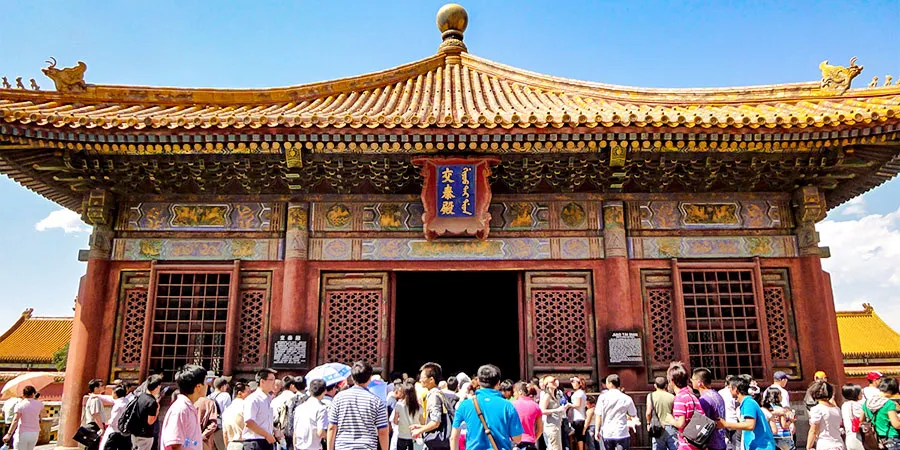 |
| Hall of Celestial and Terrestrial |
What was the Hall of Celestial and Terrestrial Union used for?
Main Function: Empress's Ritual Space
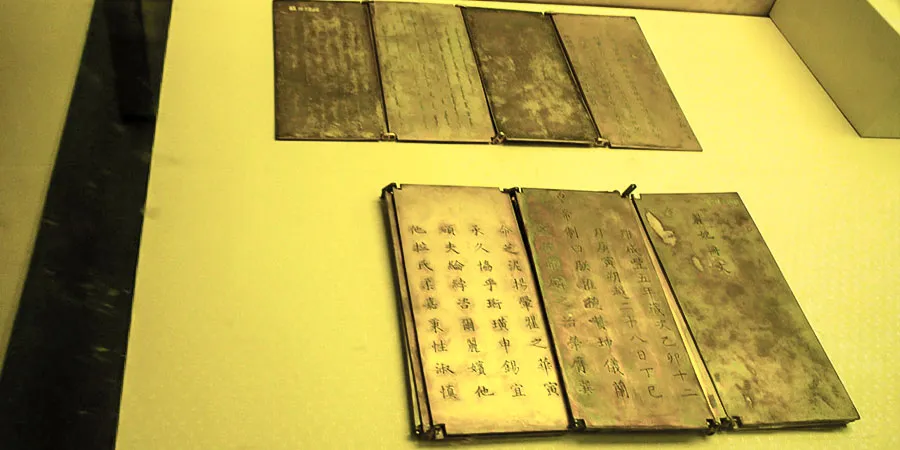 |
| Empress's Wedding Edict |
From the mid-16th to the early 20th centuries, the Hall stood as the grand ceremonial hub for empress of the Ming and Qing dynasties. On grand occasions—New Year's Day, Winter Solstice, and the empress’ birthdays—it hosted receptions for concubines, ministers, and their spouses.
During the weddings of the empress and emperor, the empress's imperial edict and seal were displayed here, marking the completion of legal procedures.
Before the Silk Ceremony, a significant ancient Chinese ritual honoring the goddess of silk and promoting textile production, she would review silk-making tools and ceremonial preparations in the Hall of Celestial and Terrestrial Union.
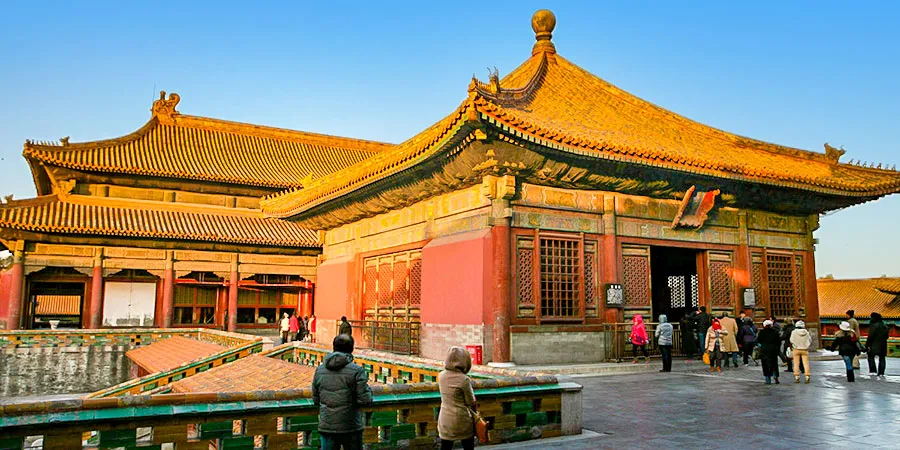 |
| Hall of Celestial and Terrestrial |
On New Year’s Day in 1640, Zhou deliberately delayed Tian's greeting, leaving her standing alone in the cold winter snow while allowing Yuan to precede her. Tian, upset, complained to the emperor, who confronted Zhou in a fit of anger.
However, after some reflection, Emperor Chongzhen apologized to Zhou and punished Tian by banning her from his chambers for three months. About two months later, Empress Zhou took the initiative to reconcile with Tian, earning her even more respect from the emperor.
Tightening the Reins for Eunuchs
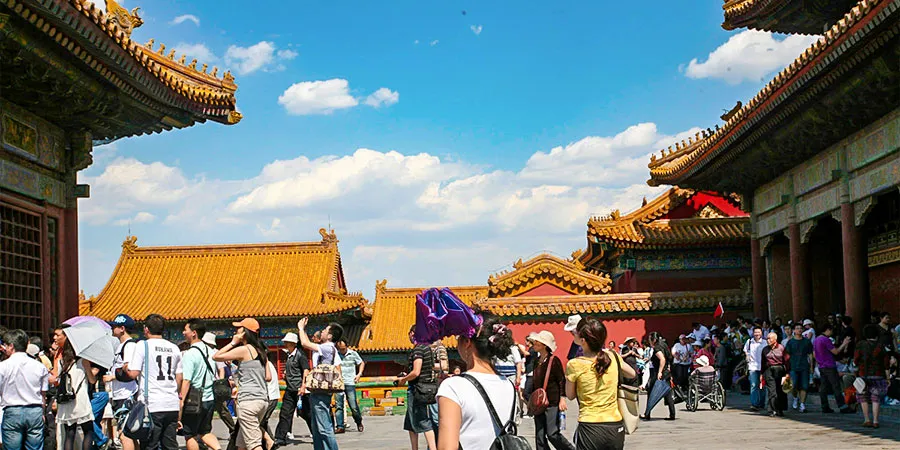 |
| Hall of Celestial and Terrestrial (Left) & Palace of Heavenly Purity (Right) |
During the Ming Dynasty, eunuchs amassed too much power, leading to national disasters. Learning from this, Emperor Shunzhi (1638-1661) issued a decree outlining six forbidden actions for eunuchs, including restrictions on leaving the imperial city and interacting with officials outside the palace, which were inscribed on iron plaques displayed in front of the Hall of Celestial and Terrestrial Union.
An Dehai, a eunuch favored by Empress Dowager Cixi (1835-1908), dared to defy regulations by leaving the imperial city unauthorized. While in an eastern Chinese city, local officials reported him to Governor Ding Baozhen, who swiftly apprehended him and, upon receiving a secret imperial order, immediately executed him without trial.
Jade Royal Seals Storage
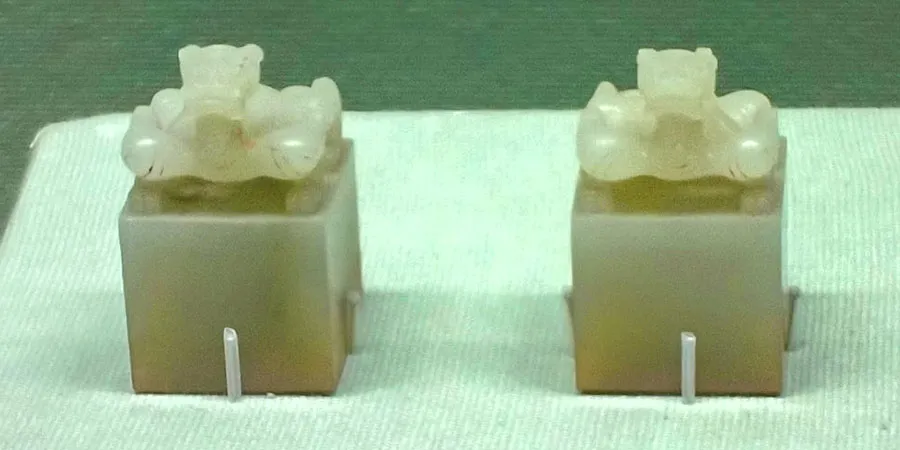 |
| Imperial Jade Seals, Qing Dynasty (1644~1911) |
In 1748, Emperor Qianlong (1711-1799) put the twenty-five jade royal seals used for the exertion of power in the Hall, which were in the control of the cabinet.
Firstly, inspired by the Eastern Zhou Dynasty (770~256 BC), which had 25 emperors over 500 years, Qianlong hoped the Qing Dynasty would last just as long. The number 25 symbolized his wish for 25 generations of Qing emperors.
Secondly, in ancient China, odd numbers represented yang, the masculine power. By adding the five basic odd numbers (1, 3, 5, 7, 9), you get 25, representing ultimate yang power. Qianlong chose this number to ensure the Qing Dynasty's enduring rule.
The big chime clock in the Hall was fabricated in 1798. The shell is a wooden tank imitating the style of a Chinese pavilion. With a total height of 5.80 meters (19 feet), the clock has three tiers. At the back of the clock there is a stair, step on which people can wind the clock. The chime clock has run for more than two centuries, yet its chime is as clear and stentorian as ever.
Over three thousand years ago, the Chinese people invented the method to measure time using dripping water. The copper clepsydra (water clock) exhibited here was made in 1745 and it is the only one of the preserved clepsydras that is still in good condition in China.
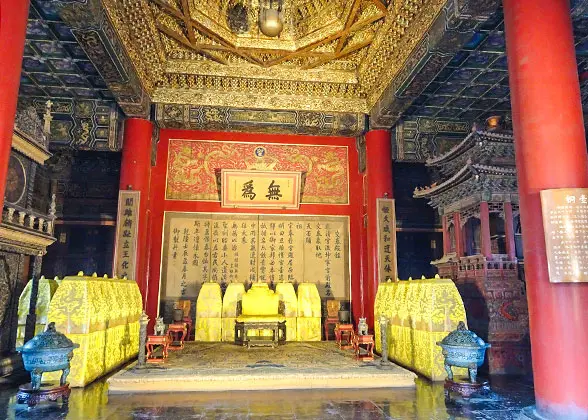 |
| Inside the Hall |
Highlighted Decorations inside the Hall
Big Chime Clock
The big chime clock in the Hall was fabricated in 1798. The shell is a wooden tank imitating the style of a Chinese pavilion. With a total height of 5.80 meters (19 feet), the clock has three tiers. At the back of the clock there is a stair, step on which people can wind the clock. The chime clock has run for more than two centuries, yet its chime is as clear and stentorian as ever.
Copper Clepsydra
Over three thousand years ago, the Chinese people invented the method to measure time using dripping water. The copper clepsydra (water clock) exhibited here was made in 1745 and it is the only one of the preserved clepsydras that is still in good condition in China.
![]() Next:
Next:
Go north to visit the Palace of Earthly Tranquility (Kunninggong).![]() Further Reading: How to visit the Forbidden City
Further Reading: How to visit the Forbidden City
- Last updated on Aug. 01, 2025 by Gabby Li -
